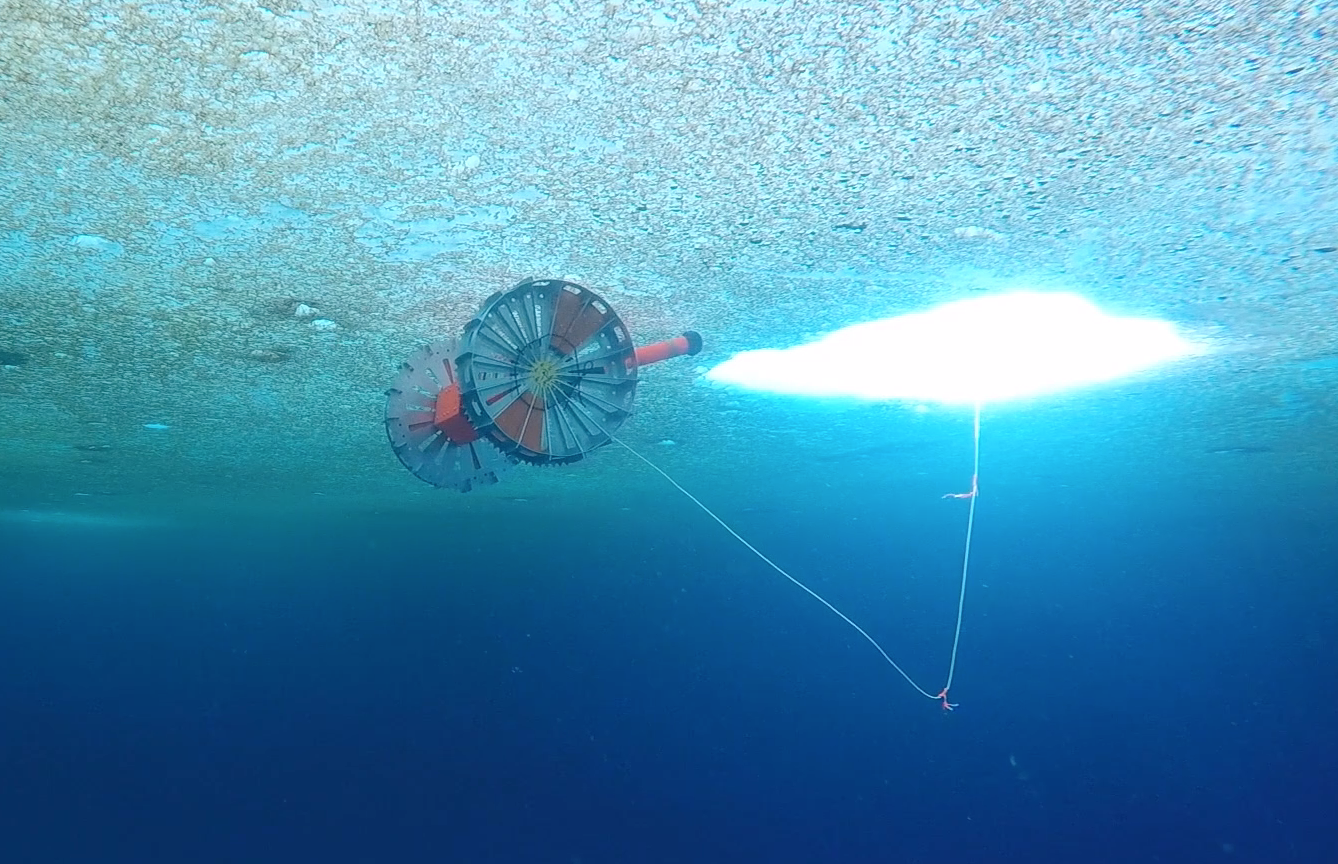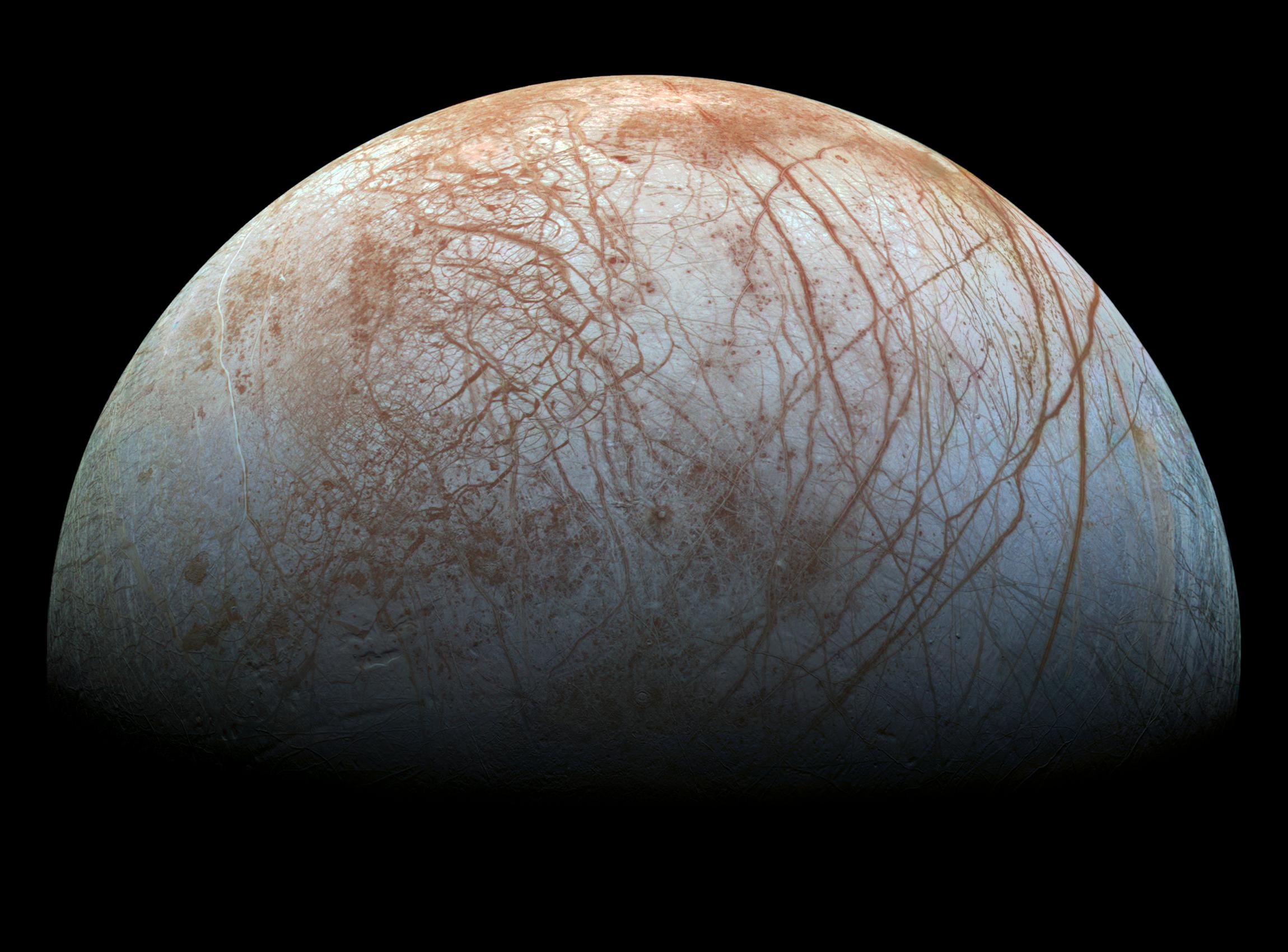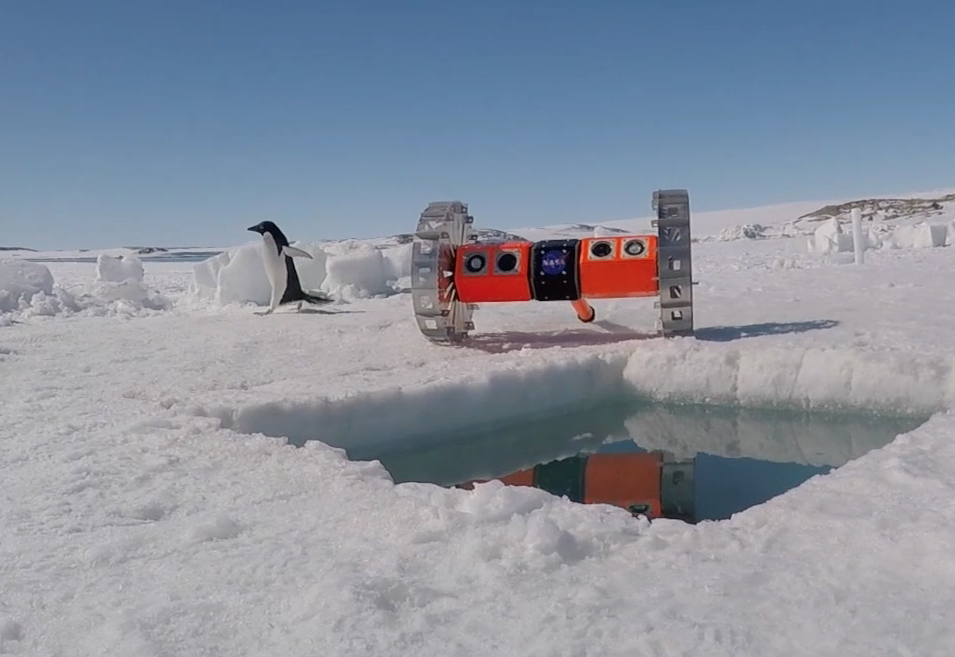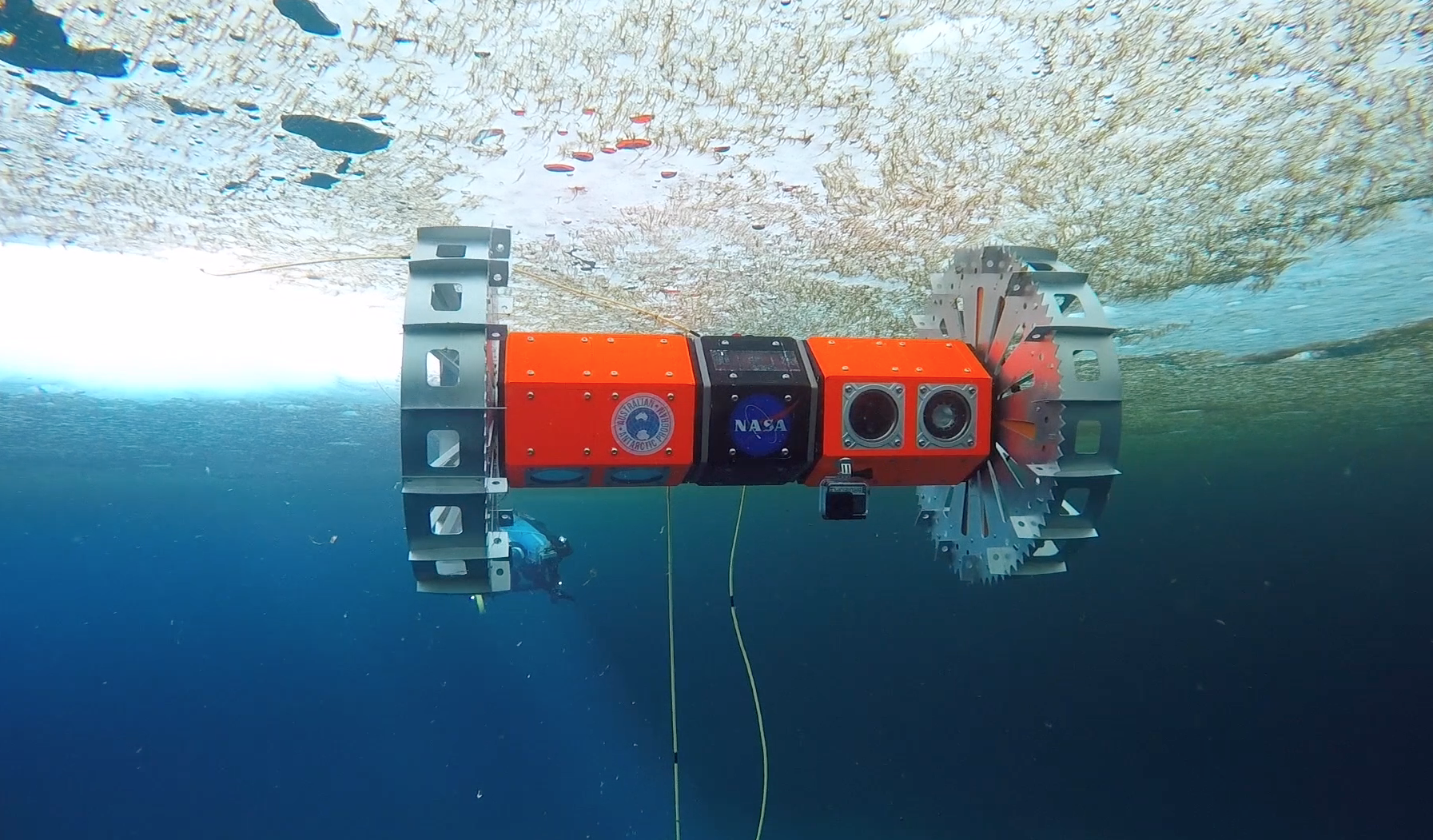An autonomous robot designed to explore ocean worlds in our Solar System has been tested beneath the ice in Antarctica.
The two-wheeled Buoyant Rover for Under-Ice Exploration (BRUIE) is designed to drive upside down along the underside of the ice sheet.
It could one day be used to search for life on moons such as Europa and Enceladus.
Beneath the ice
BRUIE was built by engineers from NASA’s Jet Propulsion Laboratory and tested in Antarctica by a team including UWA Adjunct Professor Dr Dan Arthur.
Dan spent 3 weeks putting the robot through its paces in extreme conditions at Australia’s Casey Station.
He worked alongside Dr Kevin Hand, the Jet Propulsion Laboratory’s Deputy Chief Scientist for Solar System exploration, and NASA engineers Dr Andy Klesh and Dr Dan Berisford.
“It was very successful. The robot worked well for significant durations,” Dan Arthur says.
According to Dan, BRUIE was able to drive autonomously back and forth along the underside of the ice crust in much the same way as a robot vacuum cleaner.
“Andy Klesh, the lead engineer, calls it ‘mowing the lawn’,” Dan says.
“BRUIE was able to autonomously map a large square area of ice-water interface.”

Looking for life on an ocean moon
Dan, an ex-NASA engineer himself who previously worked on Mars rovers, became involved in BRUIE when he was invited to a week-long workshop at the Keck Institute for Space Studies.
The event brought together academics and industry experts from around the world to come up with a way to access the underside of the ice on Europa, one of Jupiter’s moons.
Scientists think Europa has a salty ocean with twice as much liquid water as all of Earth’s oceans combined.

“According to Kevin Hand, the science suggests that the ice-water interface on Europa is one of the best places to find life in our Solar System,” Dan says.
“That’s where the water meets the underside of the ice. So it would be nice if we could get to that interface.”
After the workshop, Dan engaged the Australian Antarctic Division and wrote a proposal that won the team a place in the 2019 Australian Antarctic Program.

Mission to Europa
Later this decade, NASA is expected to launch Europa Clipper, the first dedicated and detailed study of an ocean world beyond Earth.
The mission will make about 45 close passes over Europa, capturing scientific imagery and other data.
It aims to find out whether conditions on the icy moon are suitable for life.
Dan says the Europa Clipper could be followed by a subsequent mission, which will aim to land on the surface of Europa.
An evolution of BRUIE could be deployed to begin the search for life on the icy moon.
In space, the robot would use onboard instruments to search for compounds of interest to scientists.
WA expertise
Dan, who also works full-time for Rio Tinto, says space agencies value engagement with WA robotics professionals because of their expertise in development and deployment of autonomous field robots.
“In WA, we’re pretty good at autonomy in the context of mining gear,” he says.
BRUIE is also being used on Earth for oceanographic research.









